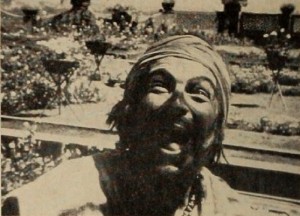
"J. N. Unwalla has chosen a simple morality tale for the theme of this colorful film from India. A beggar pleads for alms from passersby with poor success. There appears suddenly a figure who promises him wealth if he will eschew avarice and greed. As a shower of golden coins overflows his lap, however, he begs for "one dinar more." The point of the tale is proved when this evidence of his greed causes the wealth and the figure to disappear. Although employing interesting camera viewpoints to give diversity, the single setting in a Bombay courtyard suggests a stage play rather than a motion picture." Movie Makers, Dec. 1949, 470.
"The One Man Band shows the filmer, Sid Laverents, playing about six instruments all at once, not to mention an old auto horn squeezed in between his knees that would compete well with Spike Jones, He explains what he is up to as a one man band, then plays two or three selections. A lively and entertaining film" PSA Journal, Sept. 1964, 51.
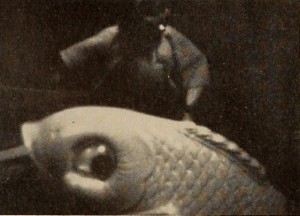
"Neither the lead title nor the unpretentious opening scenes — as a small boy is seen building a crude toy boat — prepares the spectator for the pure enchantment of One Summer Day. For, almost unrealized even as it happens, the film melts with incredible smoothness from live action into animation and make-believe. The toy boat becomes a pirate galleon of old, a flower a maiden in distress and a twig her gallant suitor, as there unfolds a tale of romantic derring-do. Under cover of darkness, the pirates plot to kidnap the lady, whose protector, a humble fisherman, is away at his nets. He returns, only to be bested in the ensuing sword play, yet, undaunted, he still gives chase. With the help of a friendly whale, he overtakes the pirates, frees his lady and, as the galleon goes down in flames, the lovers return to shore, to live happily ever after. Then, as quietly as it all began, we are back at the edge of the sunlit pond. The boy lifts his boat from the water and turns homeward. And yet, through the true magic of the movies, we have entered for a brief moment childhood's enchanted world. Highly imaginative camera handling, technical skill and a keen sense of cinematic values make this an outstanding example of personal filming. The musical accompaniment and sound effects (including the cling-clang-cling of clashing swords) complement the picture perfectly. Glen Turner has added a new dimension to amateur filming with this simple story so superbly told in its brief 350 feet of 8mm. film." Movie Makers, Dec. 1949, 452-453.
"Amateur film that follows primitive character Ooom Titty Boom who lives his life sheltered from modern society happily living off the land and frolicking in forests. He is suddenly confronted by modern society and is quickly destroyed by the destructive products of industrialization. Film is narrated by an amusing musical soundtrack of noises and sounds of human expression." via Chicago Film Archives
"Bridge construction, Meadow Brook Bridge, Maine. 'Opeechee Stream Bridge, Searsport' 'The Gypsie Bridge Builders enjoy the summer breezes of Penobscot Bay while replacing one of the few stone bridges remaining on Route 1.' Detailed documentation of bridge building in rural Maine." oldfilm.org
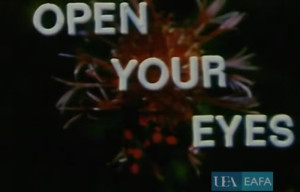
'Amateur filmmaker Dorothy Maxey observes the wildlife in her native Norfolk capturing on Super 8 film a variety of interesting flora and fauna, including at Thompson Common where ponies wade into the pingos and steal the heads from the water violets, and in her own back garden stumbling across wrestling toads. The filmmaker also recalls a story of nursing a poorly mouse following a frosty night by returning home with it to kindly warm him up under the oven grill' (EAFA.org.uk)
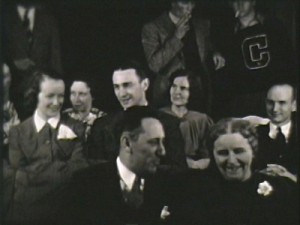
"Brief 1938 film of family and friends descending stairs into the cellar, followed by pan across the seated audience." oldfilm.org
"J. F. Hollywood, ACL, built his 8mm. film, Opera Night, around a child's dream and which involved magic. The tricks were accomplished by stopping the camera, holding the action, making the desired change in the subject and starting the camera again." Movie Makers, Dec. 1935, 527.
"Joseph F. Hollywood of New York City entered 'Opera Night,' shot entirely indoors with some trick stop action built around his children. A deserving effort that receives honorable mention." American Cinematographer, Feb. 1936, 73.
"Operation On The Brain, 300 ft., 16mm., made by Ernest Page and William Palmer, is a splendid record of a surgical operation. The film's most prominent quality is its fine definition. Correct exposure and careful lighting produced a clean cut and understandable scientific record. Closeups, made with a telephoto lens, were correctly interspersed with the longer shots to emphasize the important details. Variation in camera position is as important in films of operations as in other types of subject matter. Continuous closeups, often used in films of this nature, may be as unsatisfactory as would be continuous medium shots. Although not planned from the viewpoint of instruction, this picture is probably as satisfactory a surgical record as is possible to make under amateur conditions." Movie Makers, Dec. 1930, 759.
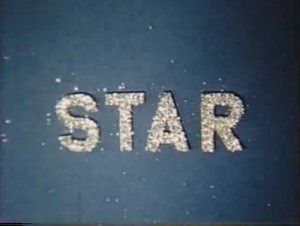
"Footage along the American River that was used to save the American River Parkway." Sacramento Public Library.
Total Pages: 203